In this Fuerteventura Landscape Photography Guide, I show you the best photo spots on the island. You'll learn that Fuerteventura is a prime photo travel destination among the Canary Islands.
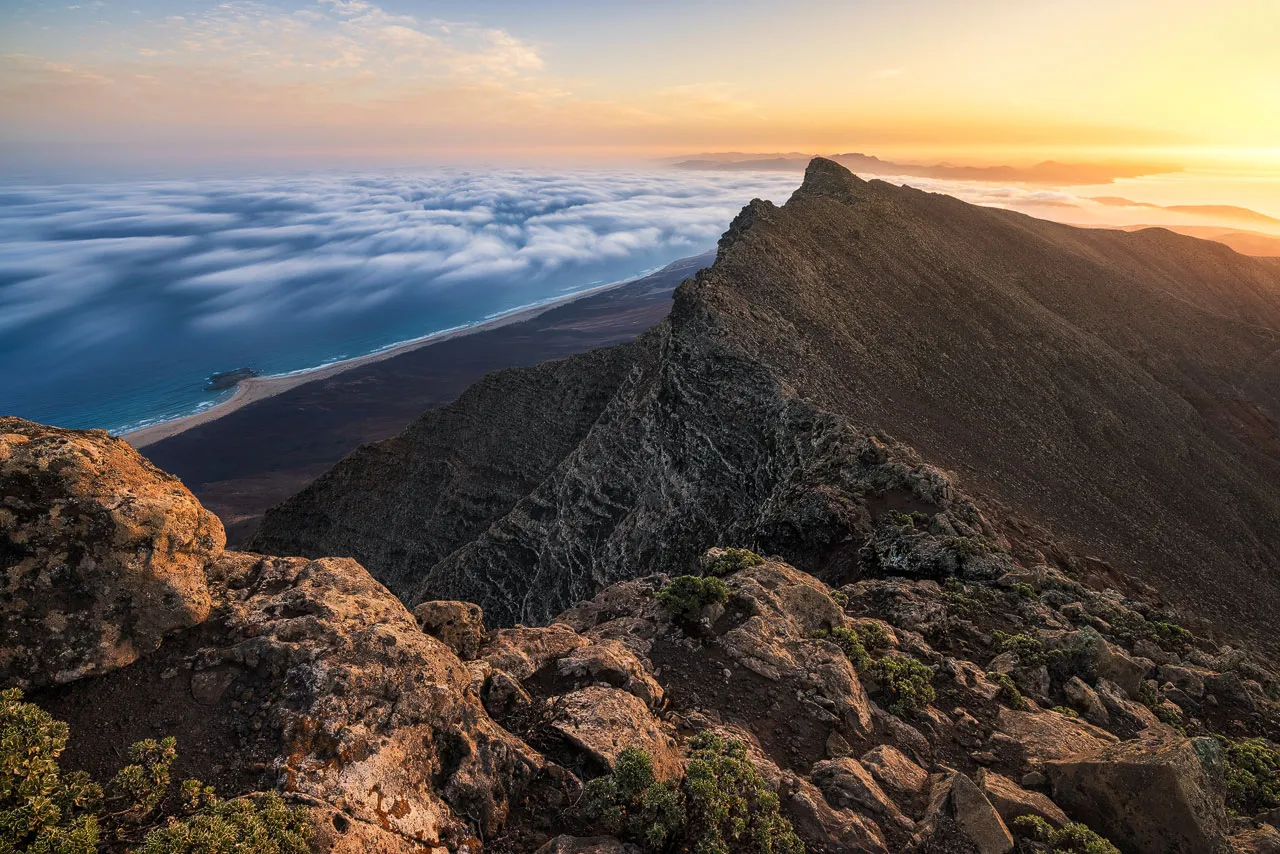
Why Fuerteventura Is Great for Landscape Photography
But first, let's answer an important question: Why should you visit Fuerteventura for photography? Tenerife and Gran Canaria are without a doubt more popular among landscape photographers. The landscapes there have been photographed a lot, and you'll find many examples of what you can capture on those islands on social media — but not so for Fuerteventura.
I found Fuerteventura to be a place full of photographic potential. But when I first started planning my trip there, I couldn't find much information about the best photography options. The two weeks I spent on the island were full of photography, though. And the best thing about it was the solitude on all my photo shoots. Except for one evening, I was always the only photographer on location.
This will change in the coming years as more and more photographers discover Fuerteventura's raw beauty. So it's best not to wait too long for your visit.
When To Visit
I visited Fuerteventura in April. With temperatures between 20°C and 25°C the climate was perfect for photography, and although I encountered a few days of Calima, I had plenty of great light.
While you can visit Fuerteventura year-round, I'd avoid the busy summer months. Most of the places I visited were relatively empty and it also wasn't too hard to find affordable apartments. During high season, this might be the case.
How To Travel to Fuerteventura
A visit to Fuerteventura requires a flight from the European mainland or the other Canary Islands. You can also do island hopping and use a ferry to visit several Canary Islands. Most of the flights are direct flights and take less than four hours. You'll also find many budget options.
Once you arrive in Fuerteventura, you'll need a ride. I rented an SUV from CICAR. They offer payment on arrival, free cancellation, and insurance without excess at a competitive price. As with all the car rental agencies on the island, you'll not have insurance coverage on unsealed roads. So, drive extra carefully once you leave the main roads.

Where to Stay
You'll find many large hotels in Fuerteventura. But those might not be the best places to stay for photographers. I prefer to find apartments as home bases for my photography tours. If you spent more than one week on the island, I'd advise you to split your itinerary into north and south. The South has more to offer and you should focus most of your time there. But don't skip the north.
Because it requires more than one hour of driving to get across the island, I initially stayed for eight days in a beautiful Airbnb near Costa Calma. It's the perfect starting point for exploring the southern part of the island with good infrastructure nearby. In Costa Calma, you'll find a petrol station, several supermarkets, and various restaurants. One of the most beautiful beaches on the island, Playa de Sotavento, is within walking distance.
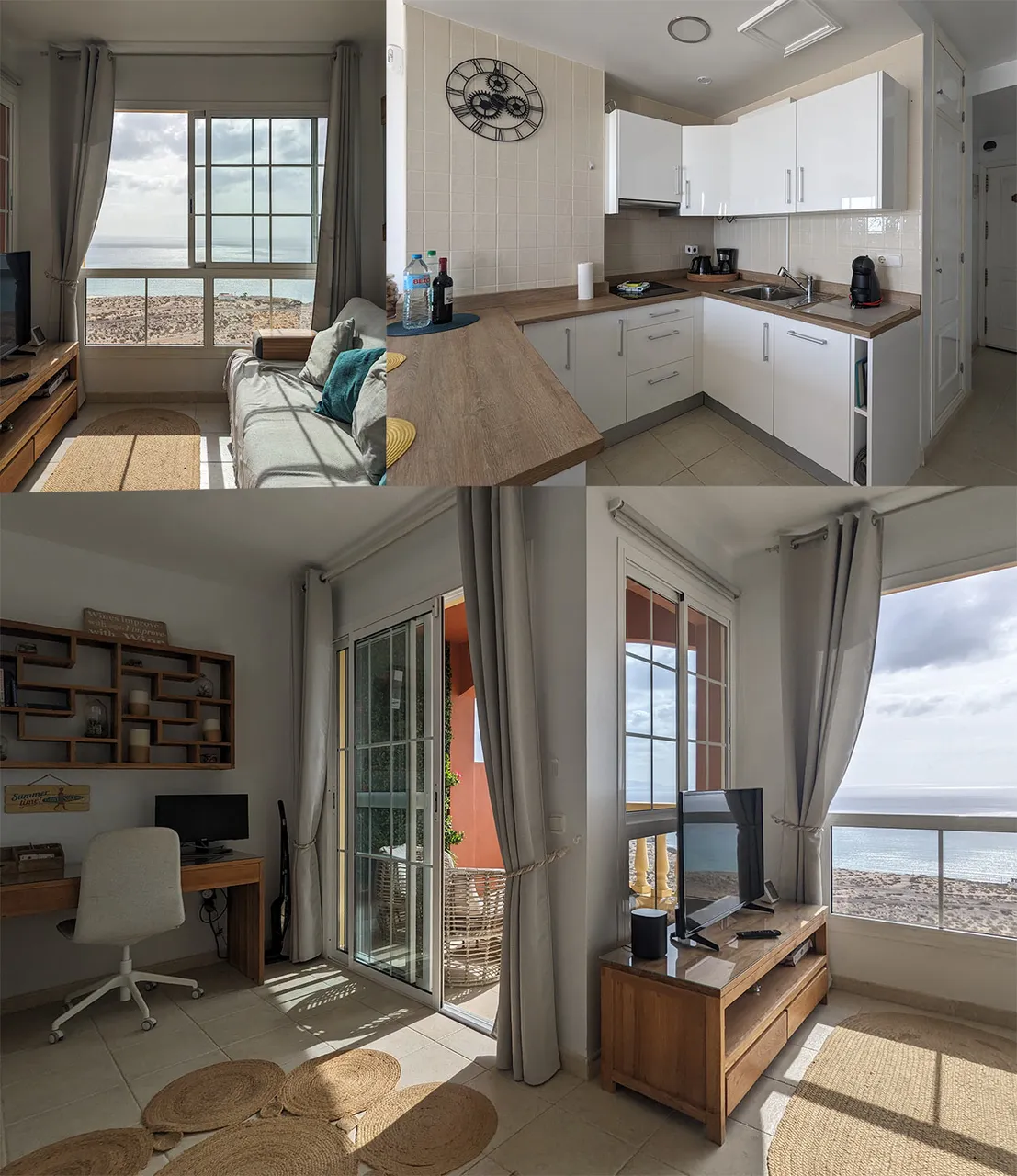
Afterward, I headed to El Cotillo for another five days. It's the prime photography destination in the north of Fuerteventura. I again rented a beautiful apartment within walking distance of the local beaches. The accommodations I chose cost around 100 Euros per night. You can certainly find cheaper lodging. But I was traveling with my girlfriend and we didn't want to compromise comfort or location.
In El Cotillo, you'll again find all you need, including a SuperDino supermarket and some great restaurants. If you are vegan, you'll enjoy the Happy Cactus. For a great fish dish, head to El Roque and get the catch of the day. The next petrol station is a short drive away in La Oliva.
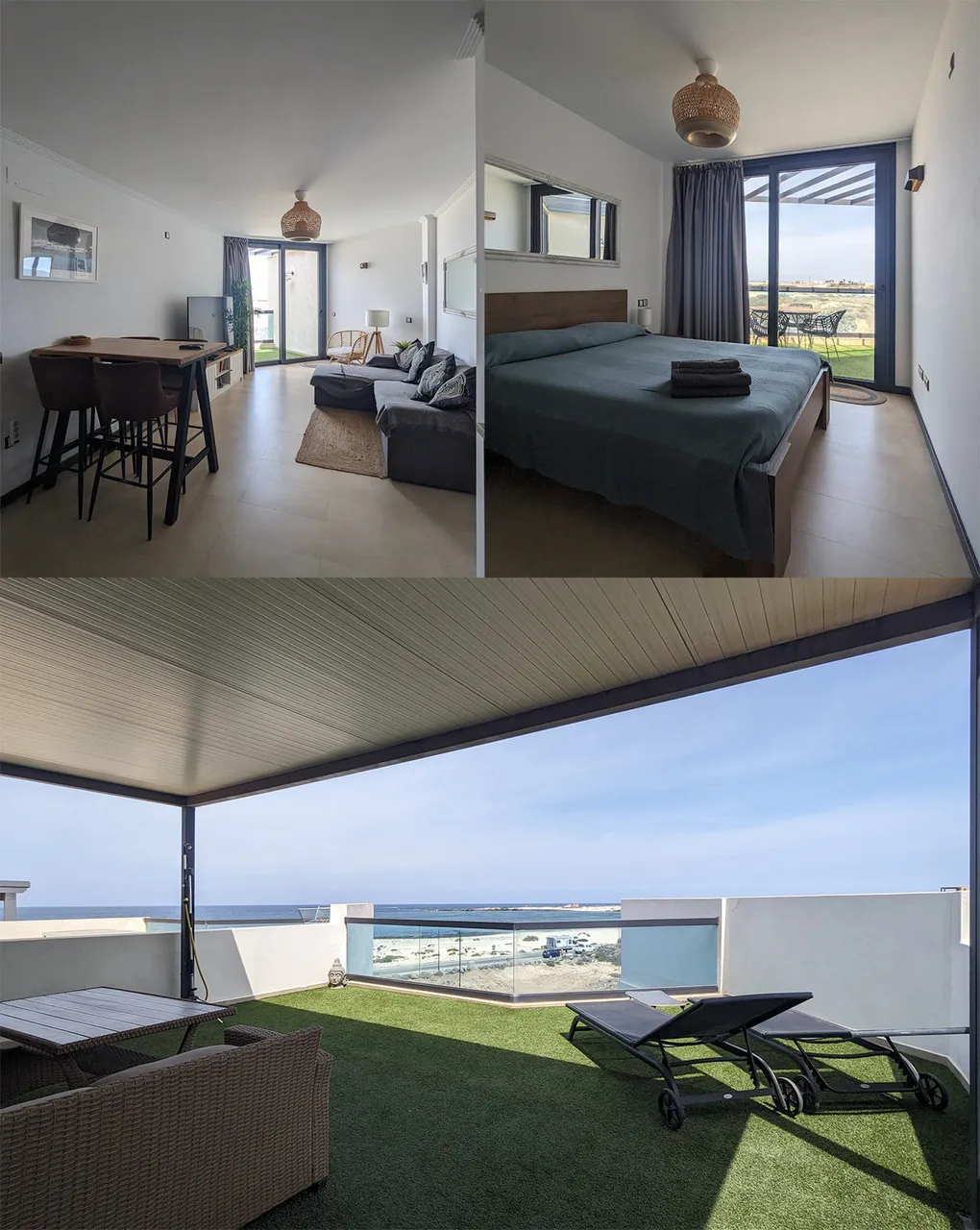
Fuerteventura Photo Spots
I already mentioned that the south of the island has more to offer for photography. This contradicts the typical Instagram photo guides you find on Google. The dunes near Corralejo are usually the main attraction they mention. I spent several hours walking those dunes, but couldn't find a great photo spot. They are beautiful, don't get me wrong. However, finding a photogenic location in this area is difficult. I'd say if you want to get a great photo of the Corralejo dunes, bring a drone.
The volcanos of the north are a similar story. They pale photographically compared to the peaks of the Jandia National Park in the south. I did some exploratory hikes in the north, but the views didn't blow me away like the ones I had already enjoyed while visiting the south part of the island.
The great photo locations I found in the north, were all close to El Cotillo. So let's start with them.
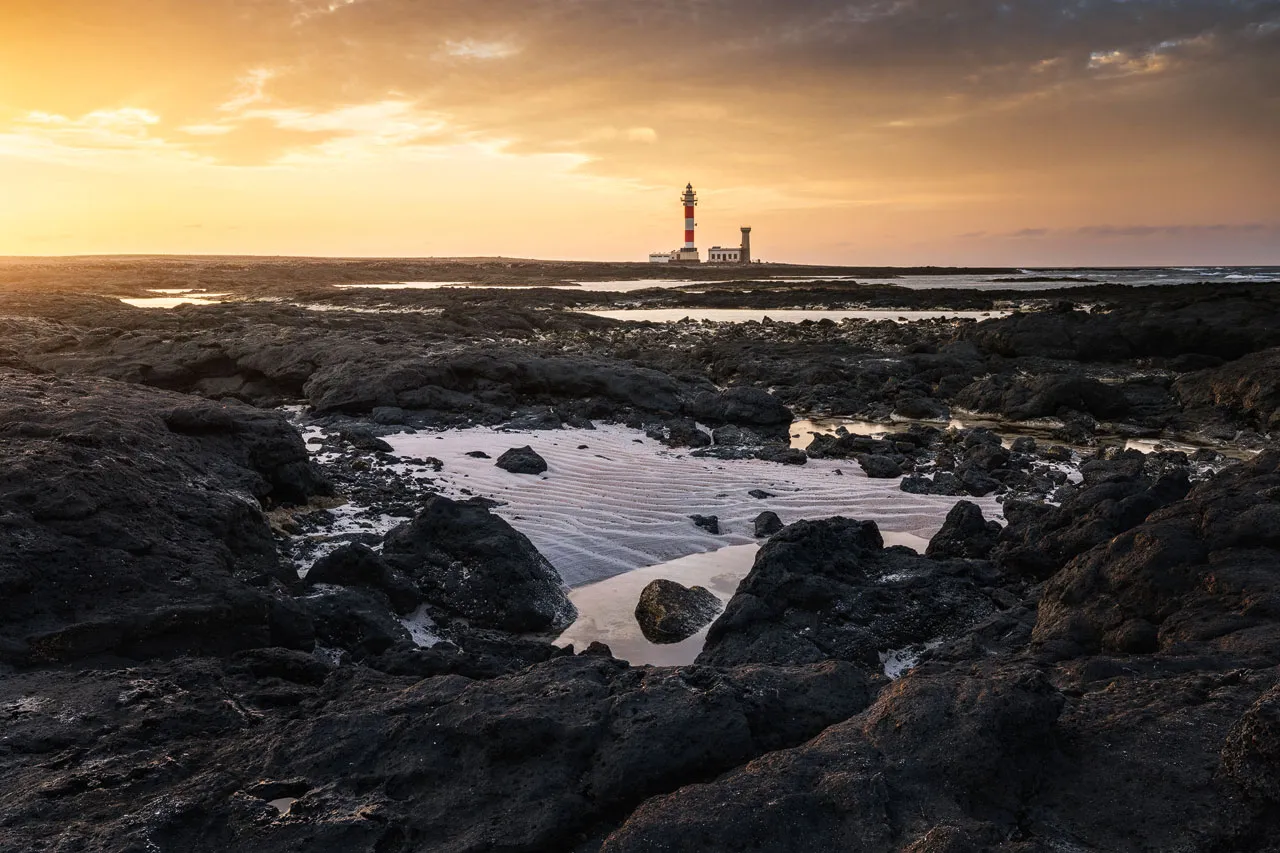
Faro de Toston
If you like to photograph lighthouses, you'll love Faro de Toston. Situated on the northwestern tip of the island, it's the perfect place to visit for sunset. Head to the Piscinas naturales de Playa de los Charcos to find the best foreground. Try to plan your visit around low tide as I explain in my Seascape Photography Guide. All you need is some golden light to capture a beautiful photo. But if you don't get it, stick around for the Blue Hour to capture a moody image of the lighthouse.
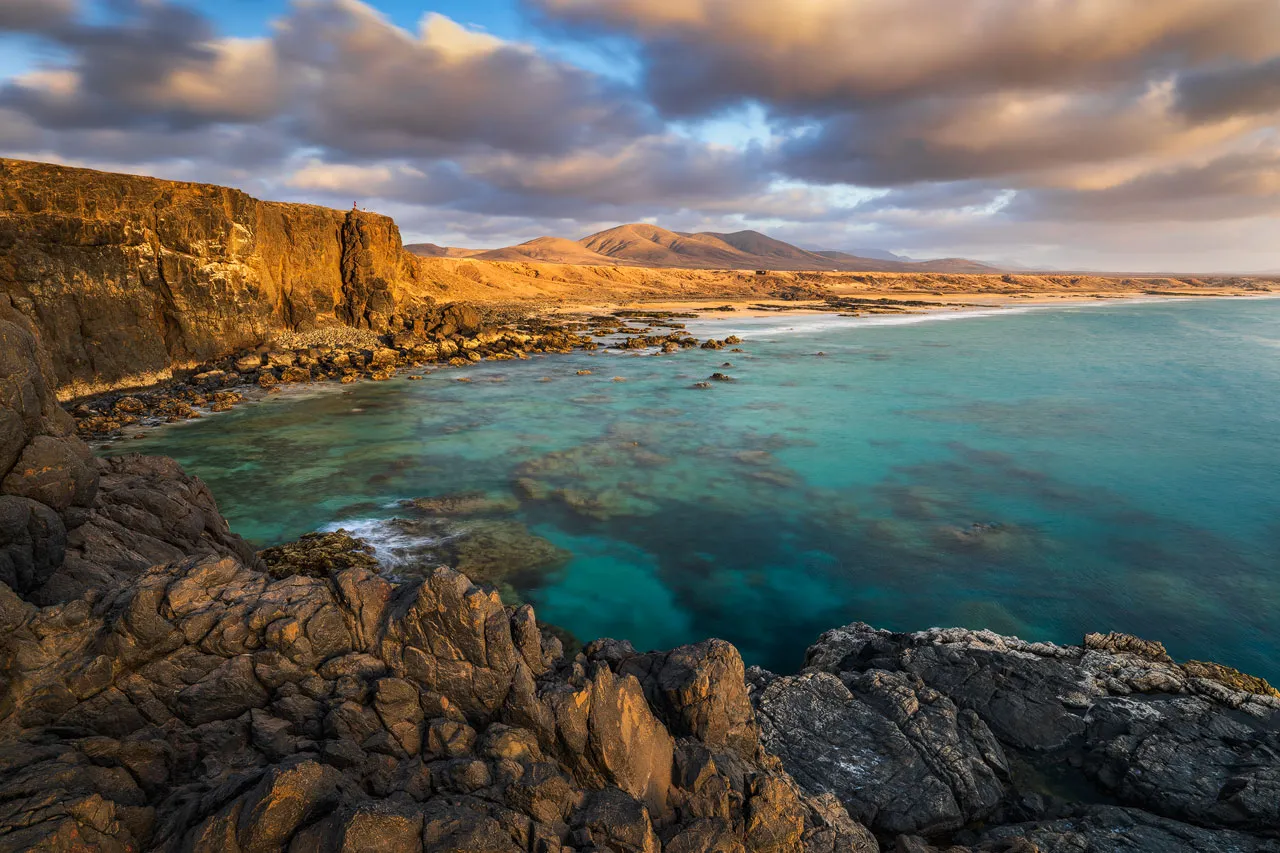
Playa del Castillo
A short walk south of El Cotillo, you'll find a spectacular coastline. The cliffs at Playa del Castillo offer expansive views along the wild beaches of the area with golden hills rising in the distance. This photo location works for sunset, sunrise, and night photography. If you stay in El Cotillo, it'll provide many options.
You'll also find many interesting rocks down at the beach. Spend time around low tide to find the best compositions to capture dramatic seascapes. Or use the long lens to photograph kite surfers braving the waves.
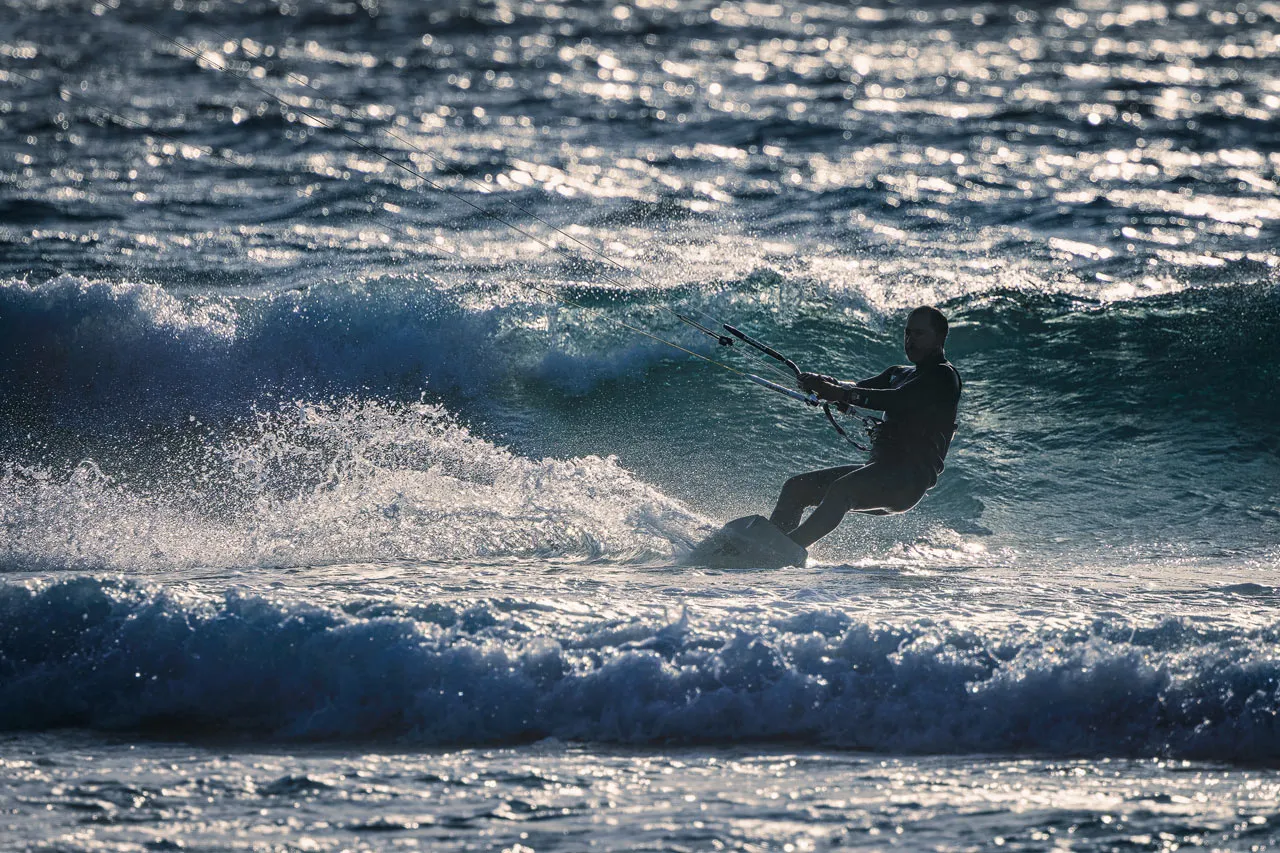
Los Molinos
A 45-minute drive south of El Cotillo lies the town of Los Molinos. The village itself is already a beautiful photo spot. But walking along the cliffs southward for 20 minutes brings you to an even better photo location. Puerto de la Cruz, Los Molinos is a fantastic viewpoint. I didn't have the right conditions to photograph this area during my visit. But with dramatic clouds and high waves, this rugged coast should be an awesome place to spend the evening.
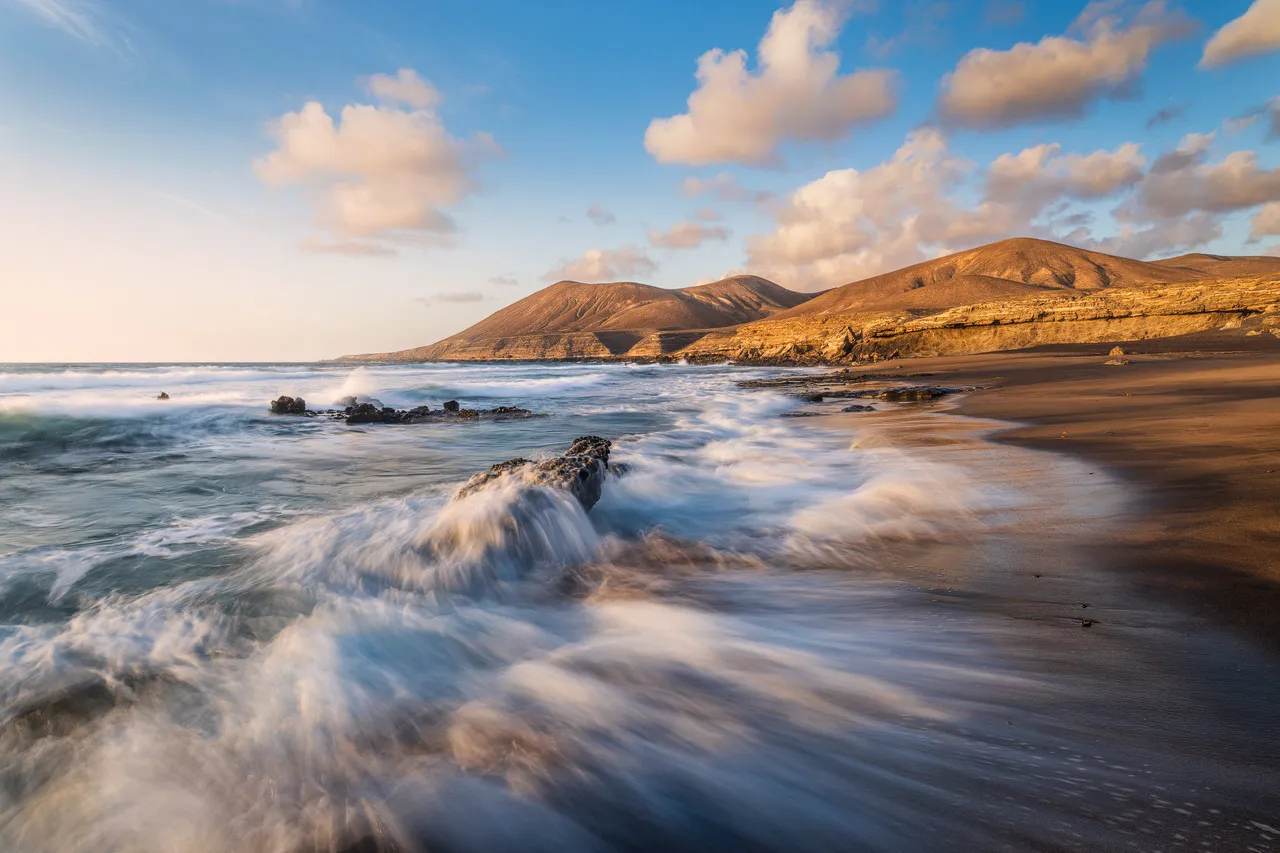
Playa la Solapa
The next photo spot on the west coast of Fuerteventura is Playa la Solapa. A mix of dark and golden sand together with dark rocks is what makes this beach unique. Come here for sunset close to low tide to find the most photographic potential. The drive is easy with just the last kilometers being unpaved roads.
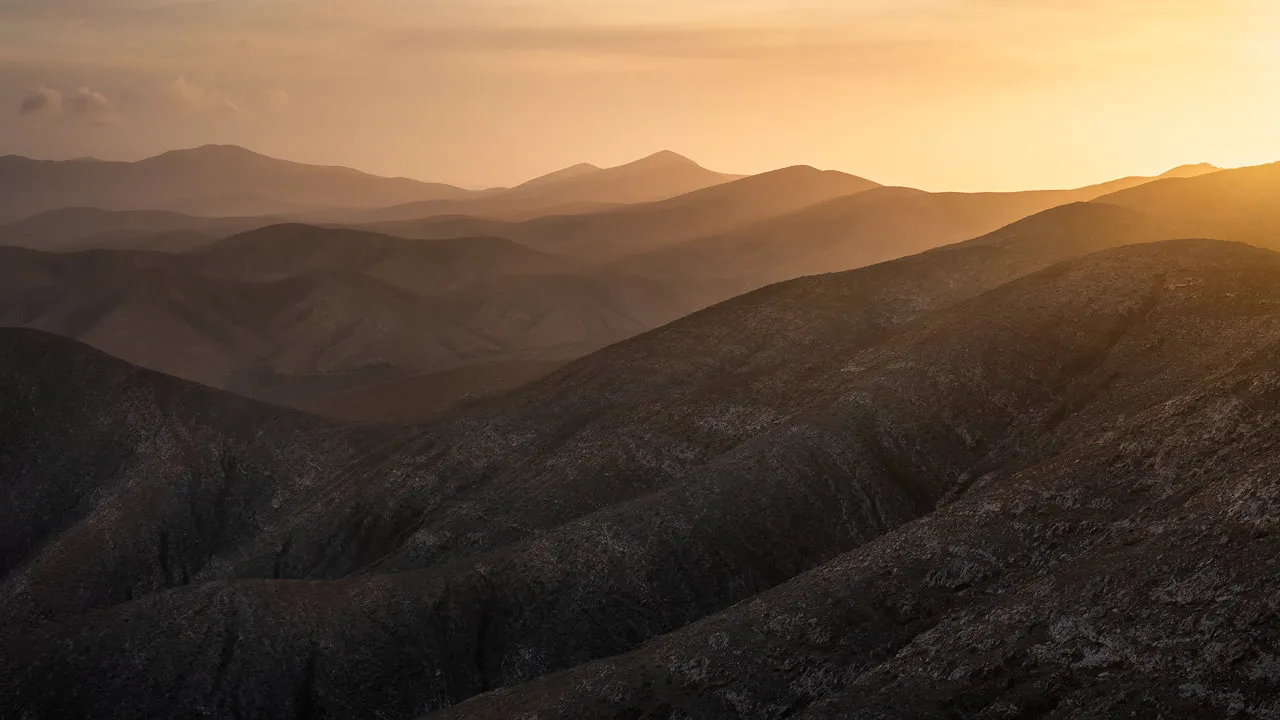
Mirador Astronómico de Sicasumbre
Maybe the most popular viewpoint in the south is the Mirador Astronómico. It's a great location for night photography. Use apps like PlanIt to check when the Milky Way is rising in the south. It's a good time to photograph light trails along the road leading to the viewpoint.
The moon interfered with this plan for me, though. But walking past the mirador, I found an even better view. It'll take you between 10 and 15 minutes of walking westward and climbing a steep hill to encounter the view I show above. During sunrise, you can photograph the golden rolling hills characteristic of this area.
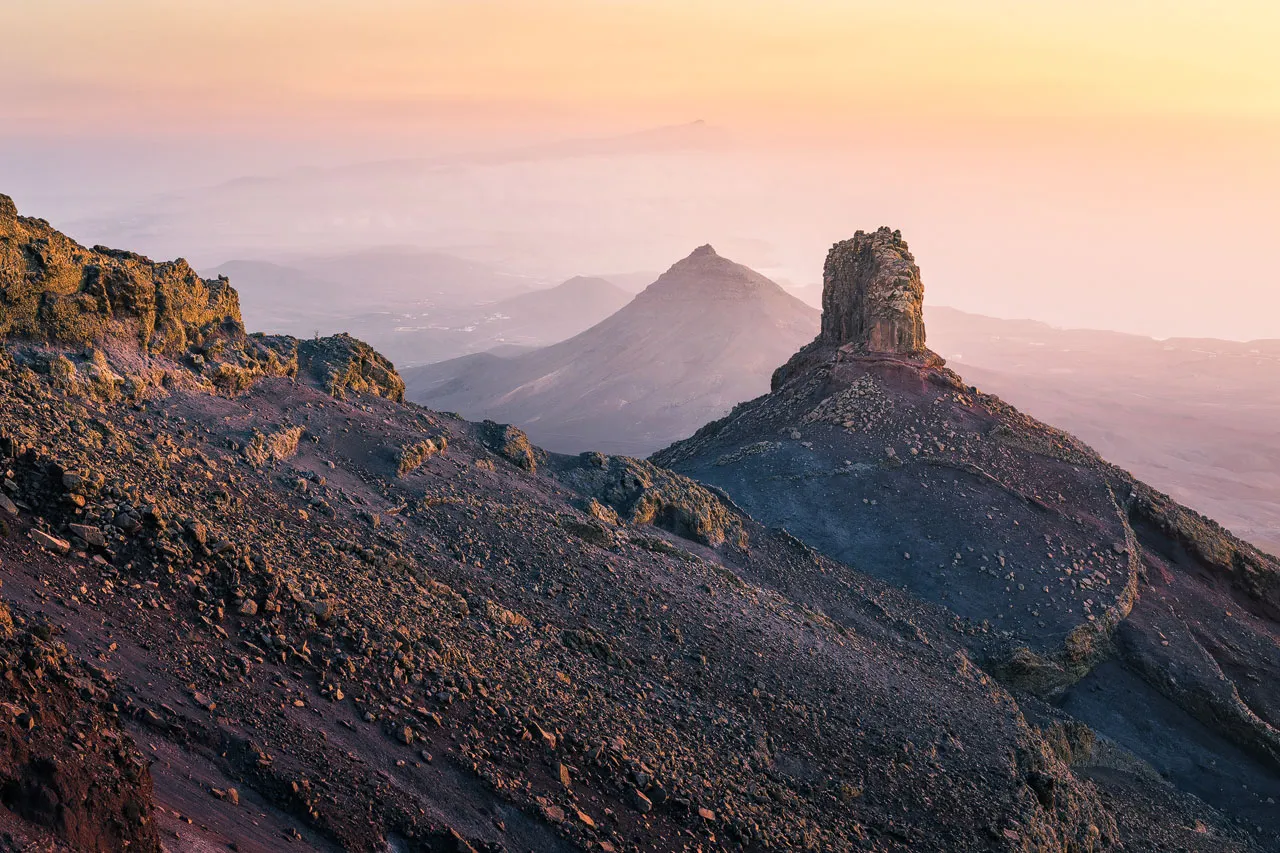
El Castillo
One of the more challenging photo spots to reach is the view beneath El Castillo. From the parking area, it's a steep climb. If you plan to hike up there, bring hiking poles. Those will come in handy, especially during the descent.
To get to the photo spot, follow the trail toward the Ermita Virgen del Tanquito. On OpenStreetMap, you'll see that the trail toward El Castillo and the Cardon massif continues straight up the mountain from this spot. After a few 100 meters, there's not much of a trail to follow anymore, so you'll need some path-finding skills. It shouldn't be a problem for experienced hikers who have spent time in the mountains. If you don't feel comfortable on loose rock, you might rather want to pick one of the other photo locations in this guide.
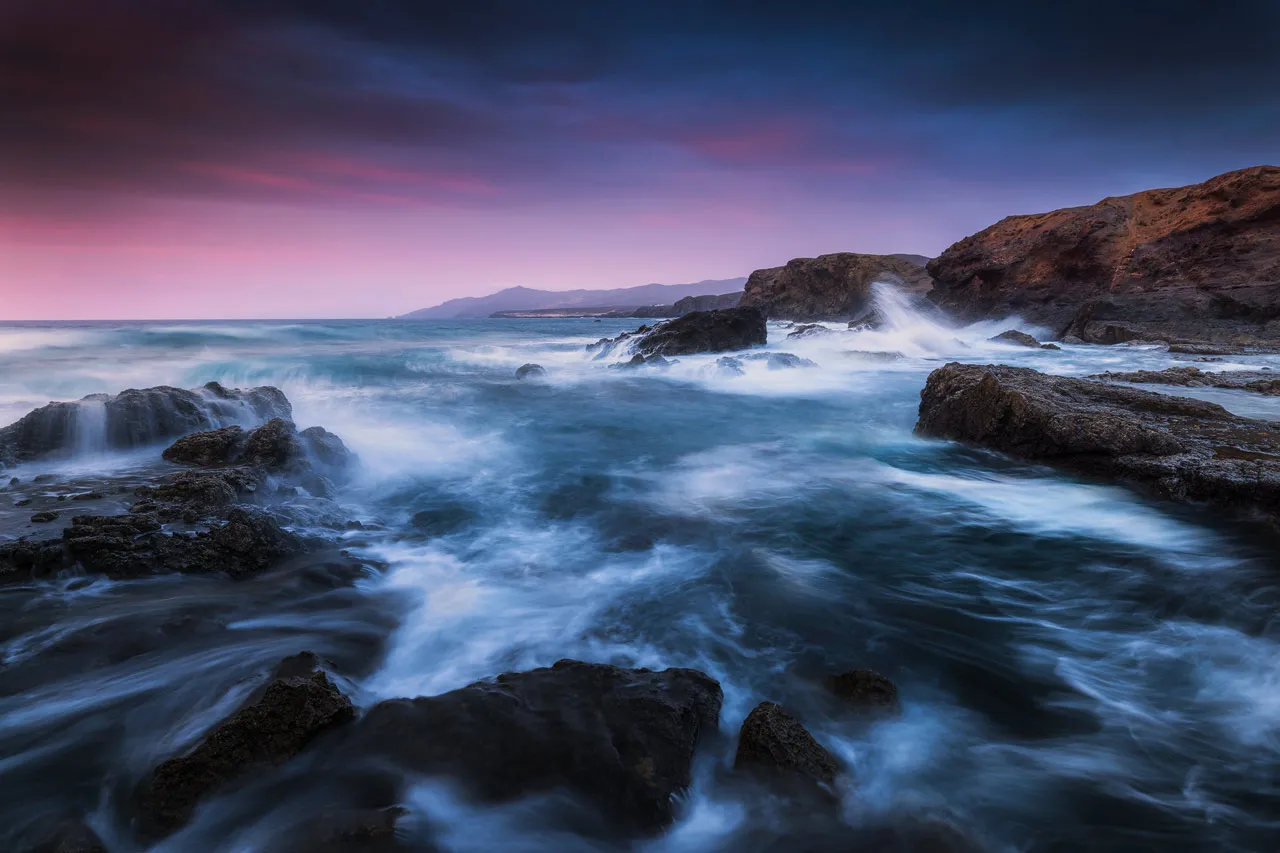
La Pared
The cliffs and beaches at La Pared are a must-visit location. And they are easy to get to. You can park your car nearly on location and there's not much walking required to get to the best views. I'd still recommend planning for at least one hour to explore the area. There are so many possible compositions and you should not be in a rush if you want to find the best ones.
Although the classic view is toward the Jandia peninsula, I settled on a north-facing composition during my visit. The wave action in this cove was too good to be missed, although the sky toward the west was burning and I have only a hint of that color in my photo.

Jandia View
Rocks, dunes, mountains, and the sea: It's what makes the view above special. It's located close to Playa Larga, and you'll find tours heading there in 4x4 jeeps. Thankfully, those tours usually leave well before sunset. You'll mostly have the view for yourself if you do the six-kilometer hike. The road leading there is not made for rental cars and you should rather park here and walk. The hike is easy and can be done in less than 90 minutes.
Pico de la Zara
Another photo spot that requires a six-kilometer hike is Pico de la Zara. This time, you'll have to climb a mountain though. It took me nearly 90 minutes to get up from the parking area. The trail is wide and well-marked, so it was easy to do before sunrise. Your efforts will be rewarded with the view from the title photo of this article.
If you head up there before sunrise, you might get lucky encountering deep clouds like I have. I noticed such conditions several mornings.
Playa de Cofete
The Cofete beach is the wildest beach on the island. From Morro Jable, it's a 45-minute drive on unsealed roads to get there. Those roads were in good condition during my visit and shouldn't be a problem, even if you don't have an SUV.
There are two parking areas at the beach. You might want to choose the first one if you intend to photograph Roque Del Moro. Turn left here and head down the road as far as you feel comfortable. I didn't check the condition of this road, since I went to the second parking area.
The second parking area is a three-kilometer walk from Islote de Cofete. I went there around noon to do some scouting. It's a great photo location for sunset photography, especially if the sea is a bit rough. Because there were so many other interesting views in the south, I didn't head back there, though. I had to pick and choose.
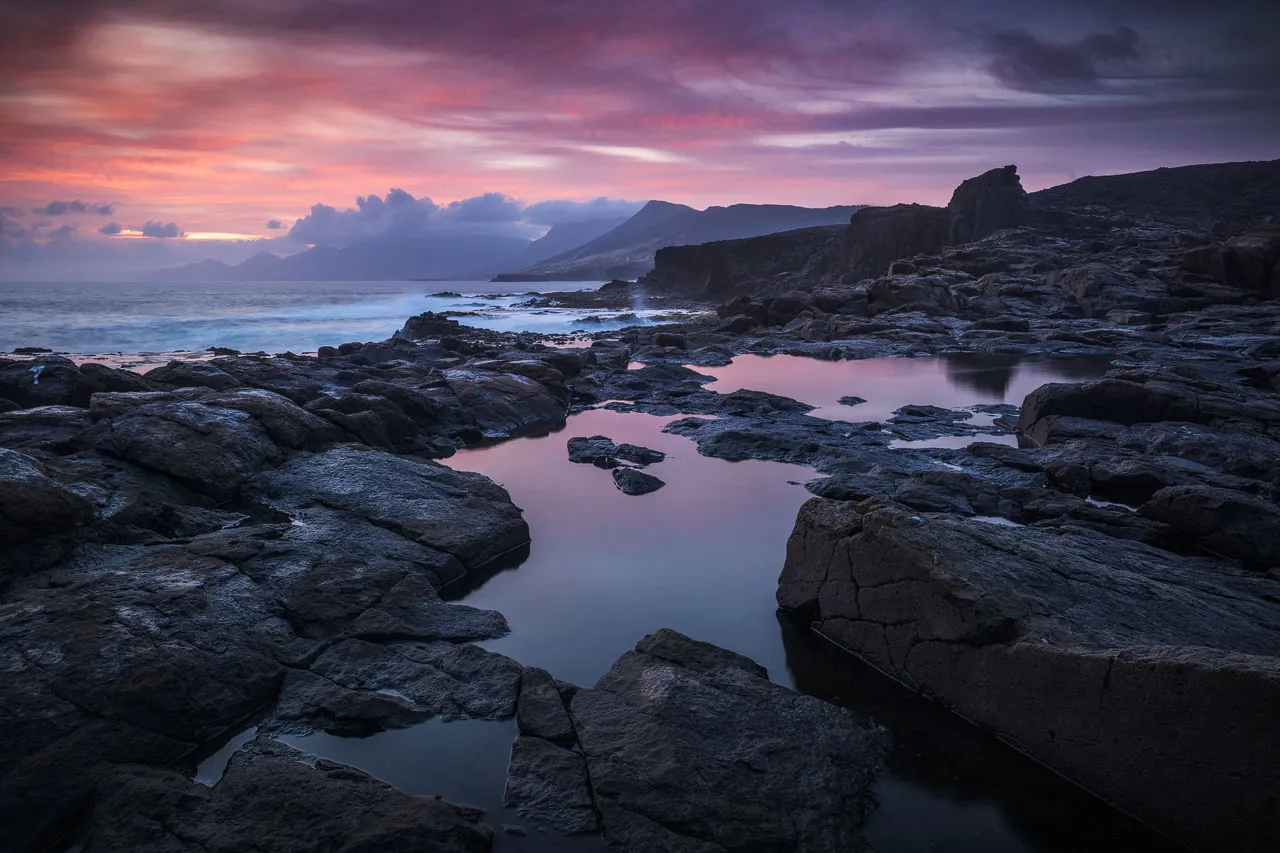
Punta Pesebre
One spot I picked was Punta Pesebre. It's the most spectacular seascape photography location on the island. The best time to visit is in the morning with the sun rising behind the Jandia mountains.
If you want to visit, plan for some time. I didn't drive all the way to the photo spot because the road was too bumpy. Instead, I parked my car near the Jandia Lighthouse and walked the rest. It took me around 45 minutes.
As you arrive in the dark, you'll first want to take some photos from up on the cliffs until it gets bright enough to asses the situation down on the rock shelf. Depending on the tides and the surf, you might not be able to get down there. My visit to Punta Pesebre coincided with low tide and I explored the various tidal pools that had formed between the dark rocks. Those were great photo subjects.
Conclusion
You might have noticed that the locations I shared above and in my gallery are all located along the west coast of Fuerteventura. I encourage you to explore beyond these spots. There are also some places of interest on the east coast and inland.
And also don't forget to relax a bit. During the daytime, there's not too much to photograph on the island. It's where places like Tenerife or Gran Canaria are still ahead. But after spending hours hiking and photographing before and around sunrise, it's nice to get some beach time.